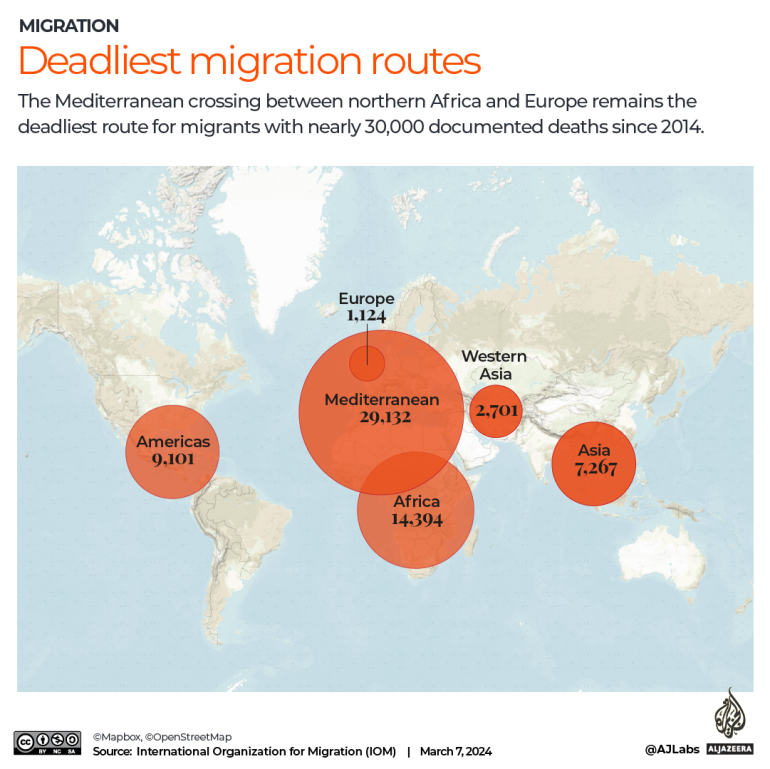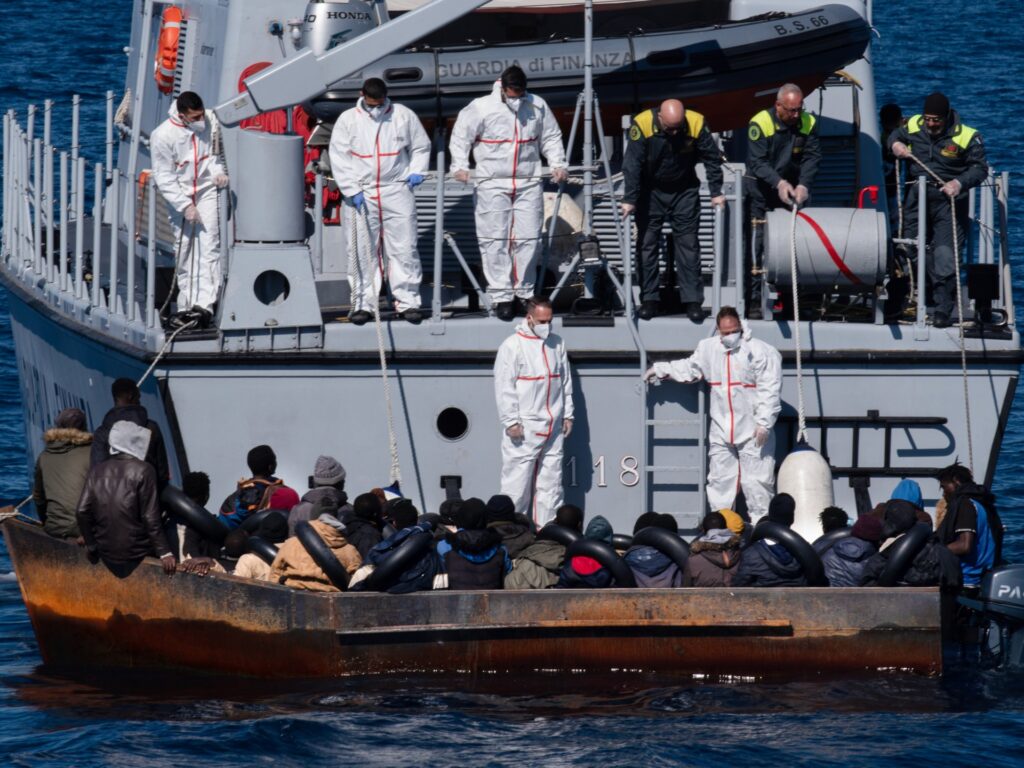The International Organization for Migration (IOM) announced that 2023 was the deadliest year on record for refugees and migrants, with at least 8,565 people killed on migration routes around the world.
This is a 20% increase over the previous year.
The previous highest death toll was 8,064 in 2016. At the time, refugee deaths were skyrocketing in the Mediterranean as large numbers of people sought to flee conflict zones such as Syria, Afghanistan and Iraq. Many refugees fleeing conflict zones are attempting to reach European countries in search of safety.
Where and how did refugees and immigrants die?
At least 8,565 refugees and migrants died last year, more than half of whom drowned during Mediterranean voyages. 9% were due to car accidents and 7% were due to violence. The second highest number of migrant deaths was in 2022, after 2016's 7,141, and 2020 had the lowest number of migrant deaths at 4,032.
In December, 61 refugees and asylum seekers died in a shipwreck off the coast of Libya, and in April, at least 25 people drowned in a shipwreck off the coast of Tunisia.
At least 3,129 deaths and missing people have been recorded in the Mediterranean since 2017, making it the most dangerous route for refugees. In Africa, 1,866 people died, mainly on the route to the Sahara Desert and the Canary Islands. 2,138 deaths were reported in Asia, most of them Afghan and Rohingya refugees fleeing violence and conflict in their countries of origin.

What has changed in the past year?
The rising number of deaths of migrants and refugees comes at a time when their rights are increasingly under attack from the countries they hope to reach and the countries in which they hope to make a new home.
Some countries are expelling refugees. In the Netherlands, for example, thousands of third-country nationals, mostly students and young workers from Asia and Africa, fleeing Russia's invasion of Ukraine have been ordered to leave the country.
Many countries have restricted legal entry routes for refugees, forcing them to take increasingly dangerous journeys to reach safety.
For example, in the UK there is no visa route for refugees to travel to the UK. The Refugee Council announced this week that refugee resettlement in the UK had plummeted to 766 people in 2023, a 10-year low, as legal routes to safety were restricted.
European countries are also working with countries of origin to restrict refugees and immigrants. Last year, the European Union signed a 10 million euro ($11 million) deal with Tunisia, where many people try to cross the Mediterranean Sea, to crack down on illegal immigrants trying to enter Europe.
Meanwhile, the situation for refugees and asylum seekers has become intolerable in many places, forcing people to move again. This week, Human Rights Watch reported that Malaysia is holding thousands of refugees and migrants in a network of “violent and vile” detention camps, where they are deprived of basic necessities and may be subjected to torture. It was reported that there is.
Who are refugees and immigrants?
IOM has been tracking deaths and disappearances since 2014 through its Missing Migrants Project.
Over the years, it has been found that approximately 13 percent of the total number of refugees and migrants are children under the age of 18, and 48 percent are women and girls.
Many people are victims of human trafficking. From 2002 to 2021, the Counter-Trafficking Data Collaborative (CTDC) stated that 156,330 individual cases of human trafficking were reported.
Many refugees are victims of natural disasters. According to statistics from the Internal Displacement Monitoring Center (IDMC), in 2022 more than 30 million people will be internally displaced due to natural disasters such as floods and earthquakes, forcing them to flee to other parts of their country.
According to the United Nations High Commissioner for Refugees (UNHCR), in 2023, a total of 114 million people will be forced to flee their home countries due to persecution, human rights violations, violence, armed conflict, or serious public disorder. ing. .
However, “most of the displaced people do not cross the border and continue to live as refugees within their own countries,” said UNHCR spokesperson Shabia Mantu. “When it comes to refugees, [those who cross international borders in search of safety], most of them stay in countries neighboring or close to their country of origin. ”
What is the difference between an immigrant, asylum seeker, and refugee?
- immigration They are people who move from one place to another to change their place of residence, either temporarily or permanently, for any reason. This can be within your home country or abroad. There is no formal legal definition of an immigrant.
- refugees According to UNHCR, they are people who have fled their home countries due to “fear of persecution, conflict, widespread violence, or other situations seriously disrupting public order and requiring international protection.” It is. This definition was determined by the 1951 Refugee Convention.
- asylum seeker These are people who have fled their home countries due to persecution, violence or conflict and are seeking international protection. Their refugee status has not yet been determined. Asylum seekers may be granted refugee status in the country they flee to, but not all are granted refugee status.

